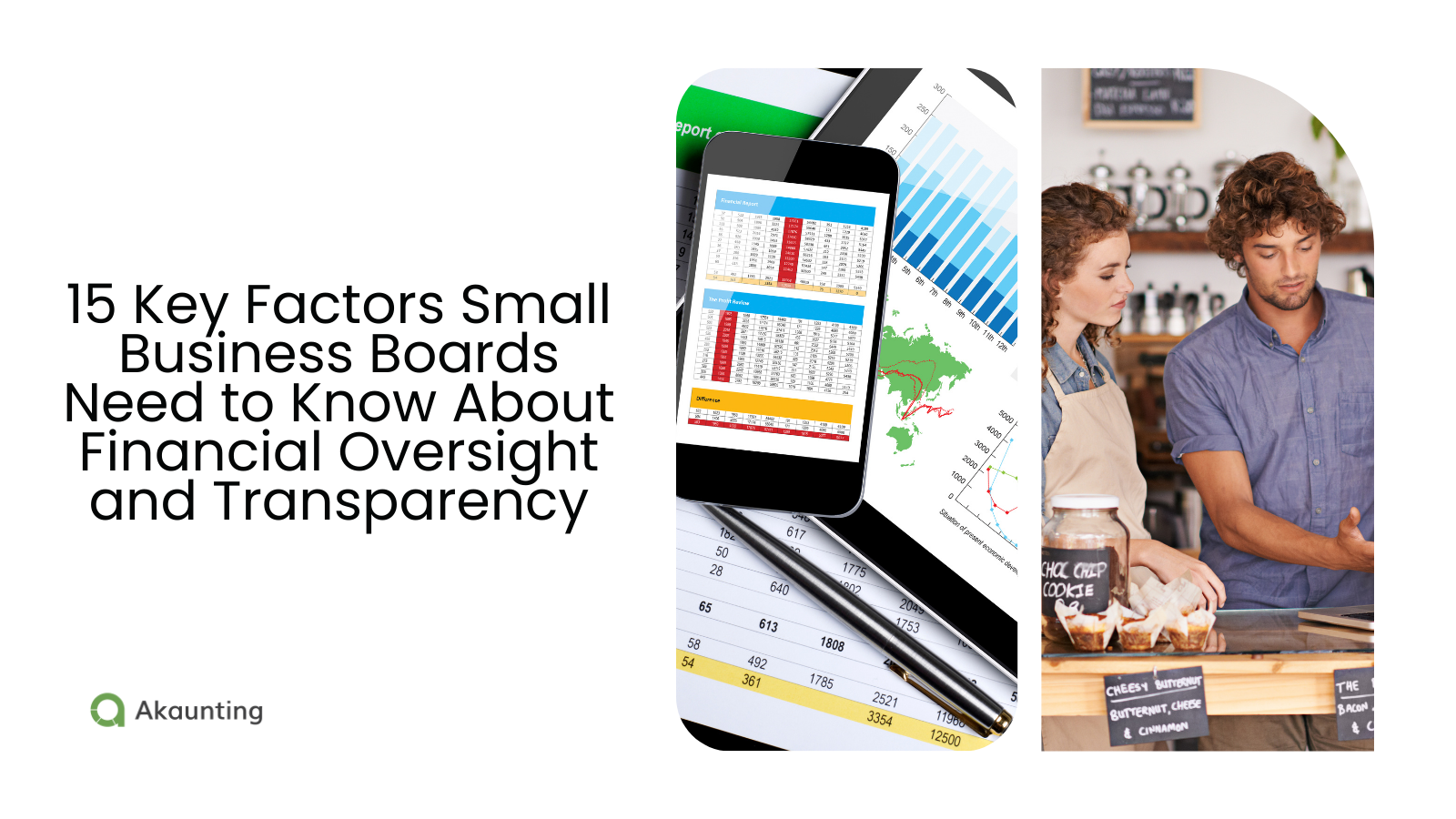How To Start A Farm
Reading Time: 12 minutesConsidering how to start a farm? Starting a farm can be both rewarding and challenging.
Before you start a farm business, it is essential to clarify your goals. Ask yourself what you want to achieve with your farm. Are you looking to produce crops, raise livestock, or engage in organic farming?
Setting specific, measurable, achievable, relevant, and time-bound (SMART) goals will help you stay focused and motivated.
Successful farming also requires careful planning, a clear understanding of the market, and knowledge of legal and regulatory requirements.
This guide provides an in-depth look at the steps needed to start a farm, from initial planning to managing production and sales.
Table of Content
- – Farming in the US
- – Initial Planning and Research
- – Budgeting to start a farm
- – Legal Requirements and Permits
- – Selecting and Acquiring Land
- – Establishing Operations
- – Record Keeping and Accounting
- – Conclusion
- – Frequently Asked Questions
Farming in the US
The demographic trends of farming present opportunities for aspiring farmers. Approximately 30% of farm operators are classified as beginning farmers, indicating a steady influx of new entrants into the industry.
Programs designed to support these beginning farmers are increasingly available, offering access to resources, training, and funding.
Additionally, the growing interest in sustainable and organic farming practices aligns with consumer demand for locally sourced and environmentally friendly products, providing a niche for new farmers to explore.
With a significant portion of farms being family-owned and a notable increase in women and minority participation in farming, there is a supportive community that aspiring farmers can tap into.
The combination of available resources, evolving market demands, and a demographic shift towards younger farmers creates a conducive environment for individuals conconsidering how to start a farm business.
Initial Planning and Research
Figuring out how to start a farm business requires initial planning and comprehensive market research to ensure success and sustainability.
Understanding and meticulously analyzing market demand for various agricultural products is critical.

Conducting in-depth research into local and regional markets is indispensable to determining which crops or livestock are currently fetching higher market demand.
For instance, the market for specialty and gourmet spices and herbs is witnessing significant growth. Companies such as Spice Specialist, Vic Cherikoff, and Formaggio Kitchen stand out for their extensive collections of unique and high-quality products.
This trend underscores a broader consumer shift towards exploring various flavors and cuisines, supporting an increased appetite for specialized spice blends and exotic ingredients that were previously hard to source.
Adapting to these shifts, you can start a farm cultivating such high-demand crops after assessing their suitability to local growing conditions and market accessibility.
Monitoring evolving culinary trends and dietary preferences is also advisable, as these can offer insights into future market demands.
Choosing the Right Type of Farm
Your choice of farming type will largely depend on your interests, resources, and market research. Common types include:
- – Crop Farming: Specializing in vegetables, fruits, or grains.
- – Livestock Farming: Raising cattle, poultry, or dairy cows.
- – Mixed Farming: Combining crops and livestock, which can be beneficial for resource management and diversification.
- – Organic Farming: Meeting the growing demand for organic products, though this requires adherence to specific standards and practices.
Location and Climate Considerations
When considering a location to start a farm, it’s crucial to take into account several environmental factors that will heavily influence the viability and productivity of your farm business.
The United States has diverse climates, ranging from the frigid temperatures of the northern states to the balmy, humid conditions prevalent in the south. This variation in climate affects the types of crops you can grow and dictates the breeds of livestock that will thrive.
For example, certain crops, such as citrus fruits and cotton, favor the warmer climates of states like Florida and Texas. At the same time, apples and wheat may be more suited to the cooler conditions in Washington and North Dakota.
In addition to climate, don’t overlook the importance of soil quality. Different crops require different soil types and nutrient levels for optimal growth.
Sandy soils, for example, suit root vegetables like carrots and potatoes, while loam soils are generally ideal for a wide range of crops due to their balance of drainage and water retention.
A thorough soil test can provide valuable insights into the soil’s composition, pH level, and fertility, enabling you to make informed decisions about what to plant and where to start a farm business.
Budgeting to Start a Farm
Creating a detailed budget is a fundamental step in starting a farm. It lays down the financial blueprint necessary for launching and sustaining your business.
Create and Manage Your Budgets on Akaunting
When fleshing out your budget, it’s necessary to consider various categories to ensure a comprehensive overview of your financial needs. Here are some considerations:
Startup Costs
When considering the startup costs of a farm, it’s important to break down the expenses into more specific categories:

- – Land: The cost of purchasing or leasing land can vary significantly based on location, size, and soil quality. It’s important to research and compare prices in your desired area.
- – Equipment: This includes machinery necessary for planting, tilling, harvesting, and other farm operations. Costs can range from purchasing state-of-the-art equipment to more affordable second-hand machinery.
- – Seeds and Plants: Depending on the type of crops you plan to cultivate, you’ll need to budget for seeds or young plants. Prices can vary based on the species, with some specialty or organic seeds costing more.
- – Livestock: If your farm operation includes animal husbandry, consider the initial costs of purchasing livestock. This includes not just the purchase price but also transportation and initial veterinary expenses.
- – Infrastructure: Building or improving farm infrastructure such as barns, sheds, fences, irrigation systems, and storage facilities can be a major startup cost. Planning for energy sources, like solar panels or wind turbines, should also be considered for sustainable options.
Pro tip:
The average cost of running a small farm can vary widely based on several factors, including location, the type of farming operation, and the production scale. Generally, individuals can expect to spend anywhere from $600 to $10,000 to start a small-scale farming operation.
Operating Expenses
Once the farm is operational, you will incur regular expenses necessary to keep it running:
- – Feed and Care for Livestock: Ongoing costs include feed, supplements, veterinary care, and possibly labor for tending to the animals.
- – Maintenance of Equipment: Regular maintenance is required to keep machinery in working order, along with potential repairs or replacements.
- – Utilities: Water, electricity, gas, and other utilities necessary for the farm’s operations need to be accounted for.
- – Labor: If hiring employees or seasonal workers, include wages, benefits, and training costs.
- – Insurance: Farm insurance may cover property, crops, livestock, and liability, protecting your investment from unforeseen events.
- – Marketing and Sales: Budget for marketing your products, whether through creating a website, attending farmers’ markets, or other sales-related costs.
Contingency Fund
It’s also wise to allocate a portion of your budget for unexpected expenses. Whether it’s a sudden price increase in supplies, emergency repairs, or natural disasters, having a contingency fund can help mitigate these financial shocks.
Check out: How to Find Investors for Your Small Business
Securing Funding
Considering how to start a farm requires addressing the significant expenses involved. You can explore several funding sources:
- – USDA and Farm Service Agency (FSA) Grants and Loans: The United States Department of Agriculture and FSA offer financial support specifically for the agricultural sector, providing a crucial resource for new farmers.
- – Crowdfunding Platforms: Websites like Kickstarter and Indiegogo can help raise funds for your farming project by appealing directly to the public for support.
- – Private Investors and Agricultural Investment Groups: These can offer substantial funding in exchange for a return on their investment. Building a convincing business plan is key to attracting these types of investors.
Legal Requirements and Permits
Choosing the right business structure is essential for legal and financial reasons. Options include:
- – Sole Proprietorship: Simple to set up but offers no personal liability protection.
- – Limited Liability Company (LLC): Provides liability protection and tax flexibility.
- – Corporation: More complex but can offer additional benefits, such as attracting investors.
Register Your Farm
Register your business with the appropriate state and federal agencies. This typically involves:
- – Obtaining an EIN: An Employer Identification Number is necessary for tax purposes.
- – State Registration: Check your state’s requirements for business registration.
Insurance
Having the right insurance policies in place is crucial for safeguarding your farm and ensuring its continued operation.
Here are the insurance types to consider:
Crop Insurance
This is fundamental for anyone looking to start a farm operation. Crop insurance comes in various forms, but its primary purpose is to protect you against the loss of your crops due to natural disasters.
These disasters could be floods, droughts, hurricanes, or significant market fluctuations that impact the price and profitability of your crops.
The two main types are:
- – Multi-peril Crop Insurance (MPCI): This covers a wide range of natural disasters and is essential for protecting your investment in a broad set of circumstances.
- – Crop-Hail Insurance: Specifically designed to protect against the damage caused by hail, which is not typically covered under standard MPCI policies. This can be particularly useful in areas prone to sudden hailstorms that can decimate crops in minutes.
Liability Insurance
This insurance is vital for any farm, large or small, as it protects you in the event someone is injured on your property or if property damage results from your farming operations.
Liability insurance helps cover legal fees, medical expenses, and other damages, ensuring that an accident doesn’t financially devastate your farm.
There are different types of liability insurance to consider:
- – General Liability Insurance: This provides broad coverage and is a must-have for any business, including farms.
- – Product Liability Insurance: If you sell products from your farm, such as produce or dairy, this insurance can protect you from lawsuits related to consumers’ consumption of your products.
- – Environmental Liability Insurance: This type of insurance covers the costs of accidental environmental damage, which is particularly relevant for farms that might be at risk of polluting nearby lands or waterways.
Ensuring you have crop and liability insurance tailored to your farming operation’s specific needs and risks can provide peace of mind and financial stability.
It’s also wise to consult with an insurance agent specializing in agricultural insurance to ensure all aspects of your business are adequately covered.
Check out: Choose a Business Idea and Structure
Land Use and Zoning Laws
Local zoning regulations shape the development and use of lands within municipalities.
These laws segment a city or county into zones where certain land activities and building uses are permitted.
The primary aim of zoning laws is to ensure that communities develop in an orderly and rational manner, promoting public health, safety, and welfare while protecting property values.
Check with local planning offices to ensure compliance with all land use regulations.
Did You Know?
Agricultural zoning policies preserve prime agricultural land. This means that areas designated for agriculture (often labeled as A-1) allow farming activities such as crop cultivation and livestock raising, ensuring that the best soils are protected for agricultural use.
Environmental Regulations
Farming activities are subject to various environmental regulations, including the Clean Water Act and Clean Air Act.
These laws regulate activities like pesticide and fertilizer application, waste management, and water usage. Compliance is crucial to avoid penalties and protect the environment.
Farm Labor Laws
If you plan to hire workers, familiarize yourself with federal and state labor laws. These laws cover minimum wage requirements, overtime pay, working conditions, and safety standards.
The Occupational Safety and Health Administration (OSHA) provides guidelines for a safe working environment.
Selecting and Acquiring Land For Your Farm Business
Choosing the right land is one of the most critical decisions you’ll make. Consider the following factors:
Soil Quality and Composition
The soil type on the land determines what crops you can grow and how well they will thrive.
Conduct a soil test to assess fertility, pH level, texture, and structure.
Rich, loamy soil is generally the most versatile and productive for various crops.
Water Availability and Rights
Water is crucial for farming, so ensure the land has reliable access to water sources such as rivers, lakes, wells, or irrigation systems.
Knowledge of water rights and regulations in the area is vital to ensuring that farming activities are sustainable and lawful.
Topography and Land Layout
The shape and features of the land affect drainage, erosion, and the practicality of farming operations.
Flat or gently sloping land is generally more manageable and productive. However, innovative agricultural practices can sometimes overcome the challenges of steeper terrains.
Accessibility and Infrastructure
Easy access to markets, suppliers, and transport networks is essential for the economical operation of your farm.
Also, evaluate the existing infrastructure like roads, fences, storage facilities, and housing.
The cost of adding or improving infrastructure should be factored into your decision.
Cost and Value
Evaluate the cost of the land against its potential to contribute to your farm’s productivity and profitability.
Consider the value of the investment and the return it is likely to generate over time.
Leasing vs. Buying
When acquiring land for personal or business use, the decision between leasing and buying is crucial and depends heavily on financial conditions and future aspirations.

Each option has distinct advantages and considerations, so it’s essential to evaluate which best aligns with your long-term objectives and current financial capabilities.
Consider leasing if you:
– Are starting new ventures and wish to minimize upfront costs.
– Desire flexibility and less financial risk.
– Are unsure about long-term commitments or future needs.
Consider buying if you:
– Have the financial resources for an upfront investment.
– Are seeking long-term stability and control over the land.
– Believe in the long-term appreciation of land value and the potential for a return on investment.
Also, investigate programs that help beginning farmers access land, such as the USDA’s Transition Incentives Program or organizations that may offer affordable land options for agricultural purposes.
Establishing Operations
Before you start a farm operation, it’s necessary to zero in on the essential equipment and supplies you’ll need for smooth functioning.
This includes tools critical for preparing and maintaining the land, ensuring the soil is apt for sowing and well-maintained throughout the farming cycle.
Additionally, a robust irrigation system is indispensable, as it guarantees the efficient utilization of water, which is crucial for crop growth and sustainability.
Choosing high-quality seeds is crucial for a successful harvest. This requires obtaining seeds from trusted suppliers known for their reliability and quality.
Similarly, in livestock farming, it’s essential to prioritize the health and well-being of the animals. This emphasizes the importance of acquiring livestock from reputable sources.
Implement Sustainable Practices
Consider adopting sustainable farming practices to enhance your farm’s resilience and productivity. This can include:
- – Crop Rotation: To improve soil health and reduce pests.
- – Organic Practices: If you choose to pursue organic certification, familiarize yourself with organic farming standards.
Marketing Your Products
Marketing your farm products effectively requires a thoughtful strategy that uses various channels and methods to reach potential customers.
Here are ways you can promote your farm produce
Direct Sales
- – Farmers’ Markets
- – Roadside Farm Stands
- – Trade fairs
- – Community-Supported Agriculture (CSA) Programs
- – Selling Directly to Restaurants
Online Sales
- – Create a Website: Optimize for search engines to increase visibility to potential customers actively searching for farm products online.
- – Utilizing Social Media: Choose platforms where your target customers are most active. Instagram, YouTube, Facebook Marketplace, and TikTok are great for visual storytelling and community engagement.
Both direct and online sales channels have unique advantages and can be complementary.
Remember, the goal is not just to sell but to tell the story of your farm and create a community around your brand. This approach can differentiate you in a competitive market and ensure long-term success.
Record Keeping and Accounting
Detailed record-keeping and accounting software are crucial for the success of your farm operation.

Implementing a comprehensive system to monitor and manage your financial transactions, inventory, and resource usage will not only be beneficial but also essential for ensuring the long-term viability and profitability of your farm.
- – Selecting a Software: Choosing a best-fit system that offers tailored solutions for small businesses, including farms, can simplify the management of your farm’s finances.
- – Expense and Revenue Tracking: Accurate, up-to-date records of expenses and revenues facilitate financial management, helping you understand your farm’s financial health at any time.
- – Inventory Management: Keep track of your farm produce and items.
- – Tax Reporting and Compliance: Good record-keeping supports compliance with tax regulations, ensuring efficient preparation and filing of necessary documentation and avoiding potential penalties.
In essence, thorough planning and diligent financial management are crucial for the successful establishment and operation of a farm.
Did You Know?
Akaunting offers a complete financial and business operations management solution that helps track income/expenses, inventory, payroll, projects, CRM, Taxes, and more. Give it a try.
Conclusion
Starting a farm requires dedication, knowledge, and careful planning. If you pay attention to the steps outlined in this guide, you’ll be well-prepared to sail past the complexities of how to start a farm and manage a successful farm business.
Remember that farming is both an art and a science; there’s always more to learn. Stay curious, be adaptable, and don’t hesitate to seek help when needed. You can turn your farming dreams into a thriving reality with persistence and passion.
Frequently Asked Questions
What is the average gross income for small farms?
The average gross income for small farms in the US typically falls below $350,000 per year, according to data from the USDA. Keep in mind that this figure can vary based on location, crops, and other factors.
What are the challenges of farming in the US?
Challenges include fluctuating commodity prices, climate variability, pests and diseases, regulatory compliance, and labor shortages. Diversification and risk management strategies are crucial for sustainability.
What are the common costs associated with farming?
The most profitable types of farming are those that provide multiple income streams, have high demand, and can be produced efficiently on a small scale.
Cattle, chickens, and goats are popular livestock choices, while ginger, niche crops, and high-value produce offer opportunities for small farms to generate significant income per acre. Beekeeping and specialty grains also show promise.
The ideal farming enterprise depends on factors like local markets, available resources, and the farmer’s skills and risk tolerance.
How do I determine the profitability of my farm?
To determine the profitability of a farm, it is essential to analyze various financial metrics, including net farm income, operating profit margin, and return on assets.
Start by preparing an income statement that summarizes income, expenses, and profit over a specific accounting period, using either cash or accrual accounting methods. Additionally, consider opportunity costs related to land, labor, and management.




